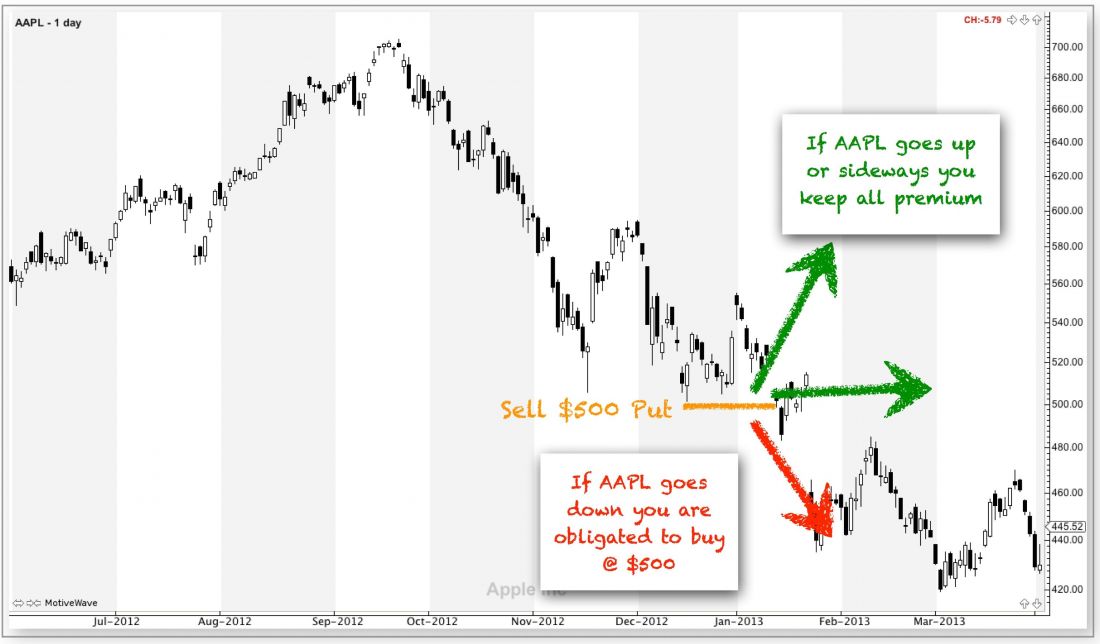Ever wonder how an insurance company avoids going broke in the event of a catastrophe? Ever consider that an insurance company might buy insurance of their own?
In my last article I presented the idea of selling stock options a business —much like an insurance company.
But consider the following problem:
Let’s assume it is January 2013 and like many other people you believe AAPL is done crashing, so you sell some $500 put options for 1000 shares to scared investors just to make some extra income. Unfortunately before January is done AAPL breaks support and resumes the downtrend. Crap! You now have to buy 1000 shares of AAPL at $500/share! That’s only $500,000 — I promise your spouse won’t care!

This risk is what drives most people away from selling options. Most people cannot stand the idea of having a potential $500,000 obligation to buy some stock. However, what if you were to buy some insurance of your own?
In my example, let’s assume you have sold some $500 puts and created an income that month of $6.00/share. (1000 shares = $6000). Now you do have a problem. If AAPL sells off rapidly and you are forced to buy some stock at $500/share, well that’s $500,000. So what if you were to buy the same insurance you sold from someone else, just a little bit lower?
So you buy a $495 put option. Now you are not obligated with this trade but rather you have bought your own insurance. If AAPL sells off rapidly you have the right to sell for $495. Consider this: You are obligated to buy at $500 (if AAPL sells off rapidly), and you have the right to sell at $495 (if AAPL sells off rapidly). You have now created a maximum risk position!
DOING THE NUMBERS
The most you risk you could take on this trade now is $5/share. To be honest it is actually less because you made a profit on the trade. Let’s do some math:
Sell $500 Put option ($6.00/share)
Buy $495 Put option ($4.95/share)
The difference is $1.05/share. (Credit)
CREDIT SPREAD
In this scenario you have will receive more for the sale of your $500 Put than you spend for the $495 Put and the difference will be your potential profit. Since it occurs on the front end we call this a credit. There is a spread between two strike prices so this is known as a Credit Spread. Since we are selling a put ($500 put) we want the stock to go up – this is Bullish. And we are using only puts. So this becomes a Bull Put Credit Spread.
This is the same idea as an insurance company buying insurance in case they were wrong. But the benefit of this trade is it has twice the chance of being profitable as buying the stock itself. If you buy the stock you have a 33% chance of making money. If you sell this option you have a 66% chance of making your money. And if you sell this option while also buying the lower strike price, you have a 66% chance (or better) of making a profit and you have also limited your downside risk!
LIMIT YOUR RISK
This is a classic strategy for option traders who want to sell options but also want to limit their risk. It is a slightly more advanced strategy but one worth spending time studying if you think you might want to sell options. I hope it helps!




